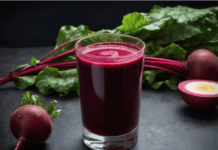Acrylamide — a chemical that is found in some foods that are exposed to high temperatures — has been linked to certain health problems, including cancer, in animal studies.
This chemical was first detected in certain foods in April 2002. According to the U.S. Food and Drug Administration (FDA):
In 2010, the Joint Food and Agriculture Organization/World Health Organization Expert Committee on Food Additives (JECFA) concluded that acrylamide is a human health concern, and suggested additional long-term studies.
While it’s not yet clear how much of a carcinogen this chemical may be for humans, concerns over its effects on the nervous system and reproductive system are yet another reason to eat mostly minimally processed and lightly cooked foods — and to include more raw foods in your diet.
What Is Acrylamide?
Acrylamide is a chemical that is present in certain foods that form from sugars and an amino acid called asparagine.
It forms during high-temperature cooking, such as when frying, grilling, roasting or baking grains and potatoes.
In terms of its appearance and taste, acrylamide is a colorless, odorless, crystalline solid. According to the Centers for Disease Control and Prevention (CDC), it “reacts violently” when melted and heated, releasing fumes that are harmful to humans and animals.
Other than in foods, you can find this chemical in cigarette smoke and some household, beauty, industrial and textile products.
It’s used to make substances called polyacrylamide and acrylamide copolymer, which a number of industries use to help process, form, filter, and stabilize products. For example, acrylamide has uses in some of the following industries:
- paper making
- construction
- oil drilling
- textile production
- cosmetics manufacturing
- food processing
- manufacturing of dyes and adhesives
- plastics
- mining
- agricultural industries
- food packaging
- treating drinking water and wastewater
How Are People Exposed to It? How Does It Form in Food?
People are exposed to this chemical mostly from eating foods that contain acrylamide.
The FDA tells us that acrylamide is naturally present in mostly starchy foods like potatoes and grains that have been fried or roasted, but it doesn’t come from food packaging or from the environment.
Other ways that people may be exposed include by smoking cigarettes and drinking water that has been contaminated.
In small amounts this chemical may enter drinking water during the water treatment process, since it’s used to treat wastewater discharge.
Less often it can be found in drinking water near locations where plastic and dyes are made, or it may enter the body through the skin if workers are exposed to it.
What foods are high in acrylamide? Some foods with the highest levels include:
- French fries
- potato chips
- grain-based foods, like cereals, bread, cookies, etc.
- coffee
- canned black olives
- prune juice
At lower levels it can also be found in dairy, meat and fish, although these food groups are not believed to contribute a significant amount to most people’s diets.
High-temperature cooking is believed to be responsible for acrylamide formation.
This means that frying, roasting, grilling or baking carbohydrate-rich foods leads to higher levels, while lower-temperature cooking methods like boiling, steaming and even microwaving do not.
When susceptible food is cooked for long periods of time, it’s more likely to develop higher levels. When we compare various cooking techniques, here is how they rank in terms of causing acrylamide levels to rise:
- Frying and grilling cause the highest acrylamide formation.
- Roasting causes considerable formation but less than frying.
- Baking whole potatoes causes less than frying or roasting.
- Boiling potatoes and microwaving whole potatoes with skin on do not produce acrylamide, based on recent studies.
There are also other indicators of how much acrylamide may accumulate on cooked food:
- Soaking raw potato slices in water for 15–30 minutes before frying or roasting helps reduce formation during cooking.
- Storing potatoes outside the refrigerator leads to less formation. When potatoes are stored in the refrigerator and then cooked, it can lead to increased acrylamide levels during cooking.
- When a grain product such is bread is toasted, brown areas tend to contain more acrylamide. It’s recommended that you avoid eating very dark or burnt sections of toast, which contain the highest levels.
When it comes to concentrations of this chemical, it doesn’t matter whether or not a food is organically produced.
Since cooking is what causes levels to rise, organic foods and non-organic foods have similar levels.
Acrylamide in Coffee
Is acrylamide in all coffee? Pretty much, considering that coffee is made with roasted beans that are cooked at a high temperature.
This chemical accumulates in coffee beans during the roasting process, not when you brew coffee at home.
Unfortunately there is still no known way to reduce acrylamide formation in coffee beans during the roasting process.
Dangers (Does It Cause Cancer?)
Why is acrylamide toxic?
Acrylamide toxicity has been shown to negatively affect the nervous system and reproductive system.
For example, studies of workplace exposure have shown that high levels of exposure through inhalation can contribute to neurological damage.
Expose to this chemical in high amounts can cause symptoms stemming from dysfunction of the nervous system, including:
- muscle weakness
- numbness in hands and feet
- sweating
- unsteadiness
- clumsiness
Acrylamide is converted to a compound called glycidamide, which has been linked with DNA damage and mutations in rodent studies.
When it comes to reproductive health, some animal studies suggest that exposure may contribute to infertility and poor pregnancy outcomes.
It may reduce the normal ability of male animals to produce offspring.
Exposure during pregnancy has been shown in animal studies to lead to decreased bodyweight, decreased startle responses, and decreased levels of some chemicals that are involved in transmission of brain signals.
That said, we know that humans and rodents absorb and metabolize chemicals at different rates, so it’s not known how applicable to humans these findings are.
Does acrylamide cause cancer?
While certain studies conducted on animals have found evidence that high levels of acrylamide are linked with cancer development, it’s still not clear how these results apply to humans.
These studies found toxic effects of acrylamide at much higher levels than those seen in foods that people commonly eat.
While the American Cancer Society does not determine if something causes cancer, it has gathered research and opinions from other “respected organizations” in order to provide the following findings:
- The International Agency for Research on Cancer (IARC) classifies acrylamide as a “probable human carcinogen.”
- The U.S. National Toxicology Program (NTP) classifies acrylamide as “reasonably anticipated to be a human carcinogen.”
- The U.S. Environmental Protection Agency (EPA) classifies acrylamide as “likely to be carcinogenic to humans.”
The American Cancer Society concludes that while animal studies show it may be a carcinogen when consumed in high amounts, “reviews of studies done in groups of people (epidemiologic studies) suggest that dietary acrylamide isn’t likely to be related to risk for most common types of cancer.”
Along the same lines, a 2014 systematic review concluded:
A majority of the studies reported no statistically significant association between dietary acrylamide intake and various cancers, and few studies reported increased risk for renal, endometrial, and ovarian cancers; however, the exposure assessment has been inadequate leading to potential misclassification or underestimation of exposure. Future studies with improved dietary acrylamide exposure assessment are encouraged.
Are Levels Regulated?
The FDA has stated that since 2002 when researchers discovered potential health risks associated with acrylamide, it has “initiated a number of activities” to help regulate levels in the food supply, including by conducting toxicology research, food surveys, exposure assessments, formation and mitigation research, and by providing guidance for the food industry.
That said, the FDA does not directly regulate the amount of acrylamide in the food supply. It does, however, regulate the levels in drinking water and in food packaging.
How to Avoid/Limit Exposure
1. Eat More Foods Cooked at Lower Temperatures
As mentioned above, acrylamide forms when certain foods are cooked at higher temperatures. This mostly occurs in starchy foods due to the sugars they contain.
The single best way to limit exposure is to eat more raw, plant-based foods or foods cooked by steaming or boiling.
According to experts, in order to keep your exposure to levels low, you don’t need to avoid all foods that are cooked at high temps, but you should focus on eating a balanced, unprocessed diet that includes some minimally cooked foods.
You can also help to keep levels from rising by following these steps:
- Store potatoes outside of the refrigerator in a dark, cool place.
- Soak potatoes for 15 minutes before cooking.
- Cook and eat potatoes with their skins still on.
- Cook potatoes until golden yellow color rather than a darker brown/burnt color.
- Avoid eating burnt/very brown spots on toasted grain products, including bread and baked goods.
2. Avoid Processed Foods with the Highest Levels
Emphasize eating a wide variety of whole foods — including fresh fruits and vegetables (ideally some that are raw), grass-fed meats, poultry, fish, beans, eggs, nuts, and seeds, for example.
Limit the amount of highly processed and packaged foods you consume, which are often cooked at high temperatures and also contain unhealthy ingredients like added sugar, trans fats, and lots of salt (sodium).
Processed acrylamide foods to avoid include:
- french fries
- potato chips
- fast food
- processed grain products like toast and rolls
- sugary cereals
- desserts
- cookies
- cakes
3. Avoid Smoking
By not smoking you reduce your exposure to dozens of harmful chemicals, with acrylamide one of them.
The National Cancer Institute reports that smokers are exposed to substantially more acrylamide than non-smokers, even people who are exposed to this chemical from food.
Studies have found that people who smoke have three to five times higher levels of acrylamide exposure markers in their blood than non-smokers.
Final Thoughts
- What is acrylamide? It’s a chemical found in some starchy foods that contain sugars and the amino acid asparagine. It forms in certain foods that are cooked at high temperatures, such as when fried, grilled, roasted, or baked.
- The highest levels of acrylamide in foods are present in potato and grain-based products. These include french fries, chips, bread, cereals, desserts, etc.
- Acrylamide in cigarette smoke and in coffee is also responsible for exposure to this chemical.
- You can limit exposure to this chemical by eating more plant-based foods that are raw or cooked at low temps (such as steamed or boiled) and by avoiding those cooked at high heat (e.g., frying, roasting, and baking). Not smoking is also an important way to avoid exposure.
- Meat, seafood, poultry, dairy, and eggs are not significant sources of this chemical, so these should also be included in a balanced diet.








